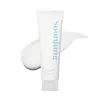What's inside
What's inside
 Key Ingredients
Key Ingredients

 Benefits
Benefits

 Concerns
Concerns

No concerns
 Ingredients Side-by-side
Ingredients Side-by-side

Water
Skin ConditioningGlycerin
HumectantPropanediol
SolventPentaerythrityl Tetraethylhexanoate
Emollient1,2-Hexanediol
Skin ConditioningSqualane
EmollientPanthenol
Skin ConditioningCetearyl Alcohol
EmollientBis-Diglyceryl Polyacyladipate-2
EmollientGlyceryl Stearate
EmollientPolyglyceryl-3 Methylglucose Distearate
EmulsifyingAmmonium Acryloyldimethyltaurate/Vp Copolymer
Hydrogenated Lecithin
EmulsifyingAcrylates/C10-30 Alkyl Acrylate Crosspolymer
Emulsion StabilisingXanthan Gum
EmulsifyingGlyceryl Caprylate
EmollientHydroxypropyl Starch Phosphate
Disodium EDTA
Ethylhexylglycerin
Skin ConditioningMadecassoside
AntioxidantTromethamine
BufferingButylene Glycol
HumectantTocopherol
AntioxidantCamellia Sinensis Leaf Extract
AntimicrobialWater, Glycerin, Propanediol, Pentaerythrityl Tetraethylhexanoate, 1,2-Hexanediol, Squalane, Panthenol, Cetearyl Alcohol, Bis-Diglyceryl Polyacyladipate-2, Glyceryl Stearate, Polyglyceryl-3 Methylglucose Distearate, Ammonium Acryloyldimethyltaurate/Vp Copolymer, Hydrogenated Lecithin, Acrylates/C10-30 Alkyl Acrylate Crosspolymer, Xanthan Gum, Glyceryl Caprylate, Hydroxypropyl Starch Phosphate, Disodium EDTA, Ethylhexylglycerin, Madecassoside, Tromethamine, Butylene Glycol, Tocopherol, Camellia Sinensis Leaf Extract
Water
Skin ConditioningDipropylene Glycol
HumectantButylene Glycol
HumectantGlycerin
HumectantHydrogenated Polydecene
EmollientDimethicone
EmollientTranexamic Acid
AstringentErythritol
HumectantTrehalose
HumectantXylitol
HumectantPEG/PPG-17/4 Dimethyl Ether
Skin ConditioningPEG-60 Glyceryl Isostearate
Pentaerythrityl Tetraethylhexanoate
EmollientPEG-5 Glyceryl Stearate
EmulsifyingPhenoxyethanol
PreservativeCetyl Ethylhexanoate
EmollientBehenyl Alcohol
EmollientTheanine
EmollientDimethylacrylamide/Sodium Acryloyldimethyltaurate Crosspolymer
Carbomer
Emulsion StabilisingBatyl Alcohol
EmollientHydrogenated Palm Oil
EmollientElaeis Guineensis Kernel Oil
EmollientDipotassium Glycyrrhizate
HumectantElaeis Guineensis Oil
EmollientSodium Metaphosphate
BufferingPotassium Hydroxide
BufferingPhytosteryl/Octyldodecyl Lauroyl Glutamate
Skin ConditioningSodium Metabisulfite
AntioxidantSaccharomyces Ferment Lysate Filtrate
Skin ConditioningPEG/PPG-14/7 Dimethyl Ether
Skin ConditioningTocopherol
AntioxidantCitric Acid
BufferingWater, Dipropylene Glycol, Butylene Glycol, Glycerin, Hydrogenated Polydecene, Dimethicone, Tranexamic Acid, Erythritol, Trehalose, Xylitol, PEG/PPG-17/4 Dimethyl Ether, PEG-60 Glyceryl Isostearate, Pentaerythrityl Tetraethylhexanoate, PEG-5 Glyceryl Stearate, Phenoxyethanol, Cetyl Ethylhexanoate, Behenyl Alcohol, Theanine, Dimethylacrylamide/Sodium Acryloyldimethyltaurate Crosspolymer, Carbomer, Batyl Alcohol, Hydrogenated Palm Oil, Elaeis Guineensis Kernel Oil, Dipotassium Glycyrrhizate, Elaeis Guineensis Oil, Sodium Metaphosphate, Potassium Hydroxide, Phytosteryl/Octyldodecyl Lauroyl Glutamate, Sodium Metabisulfite, Saccharomyces Ferment Lysate Filtrate, PEG/PPG-14/7 Dimethyl Ether, Tocopherol, Citric Acid
 Reviews
Reviews

Ingredients Explained
These ingredients are found in both products.
Ingredients higher up in an ingredient list are typically present in a larger amount.
Butylene Glycol (or BG) is used within cosmetic products for a few different reasons:
Overall, Butylene Glycol is a safe and well-rounded ingredient that works well with other ingredients.
Though this ingredient works well with most skin types, some people with sensitive skin may experience a reaction such as allergic rashes, closed comedones, or itchiness.
Learn more about Butylene GlycolGlycerin is already naturally found in your skin. It helps moisturize and protect your skin.
A study from 2016 found glycerin to be more effective as a humectant than AHAs and hyaluronic acid.
As a humectant, it helps the skin stay hydrated by pulling moisture to your skin. The low molecular weight of glycerin allows it to pull moisture into the deeper layers of your skin.
Hydrated skin improves your skin barrier; Your skin barrier helps protect against irritants and bacteria.
Glycerin has also been found to have antimicrobial and antiviral properties. Due to these properties, glycerin is often used in wound and burn treatments.
In cosmetics, glycerin is usually derived from plants such as soybean or palm. However, it can also be sourced from animals, such as tallow or animal fat.
This ingredient is organic, colorless, odorless, and non-toxic.
Glycerin is the name for this ingredient in American English. British English uses Glycerol/Glycerine.
Learn more about GlycerinPentaerythrityl Tetraethylhexanoate is an emollient that helps make your skin smooth and hydrated. It specializes in creating a non-oily and "wet" feeling on skin.
This ingredient comes from isostearic acid, a saturated fatty acid. It is a synthetic ingredient.
Tocopherol (also known as Vitamin E) is a common antioxidant used to help protect the skin from free-radicals and strengthen the skin barrier. It's also fat soluble - this means our skin is great at absorbing it.
Vitamin E also helps keep your natural skin lipids healthy. Your lipid skin barrier naturally consists of lipids, ceramides, and fatty acids. Vitamin E offers extra protection for your skin’s lipid barrier, keeping your skin healthy and nourished.
Another benefit is a bit of UV protection. Vitamin E helps reduce the damage caused by UVB rays. (It should not replace your sunscreen). Combining it with Vitamin C can decrease sunburned cells and hyperpigmentation after UV exposure.
You might have noticed Vitamin E + C often paired together. This is because it is great at stabilizing Vitamin C. Using the two together helps increase the effectiveness of both ingredients.
There are often claims that Vitamin E can reduce/prevent scarring, but these claims haven't been confirmed by scientific research.
Learn more about TocopherolWater. It's the most common cosmetic ingredient of all. You'll usually see it at the top of ingredient lists, meaning that it makes up the largest part of the product.
So why is it so popular? Water most often acts as a solvent - this means that it helps dissolve other ingredients into the formulation.
You'll also recognize water as that liquid we all need to stay alive. If you see this, drink a glass of water. Stay hydrated!
Learn more about Water